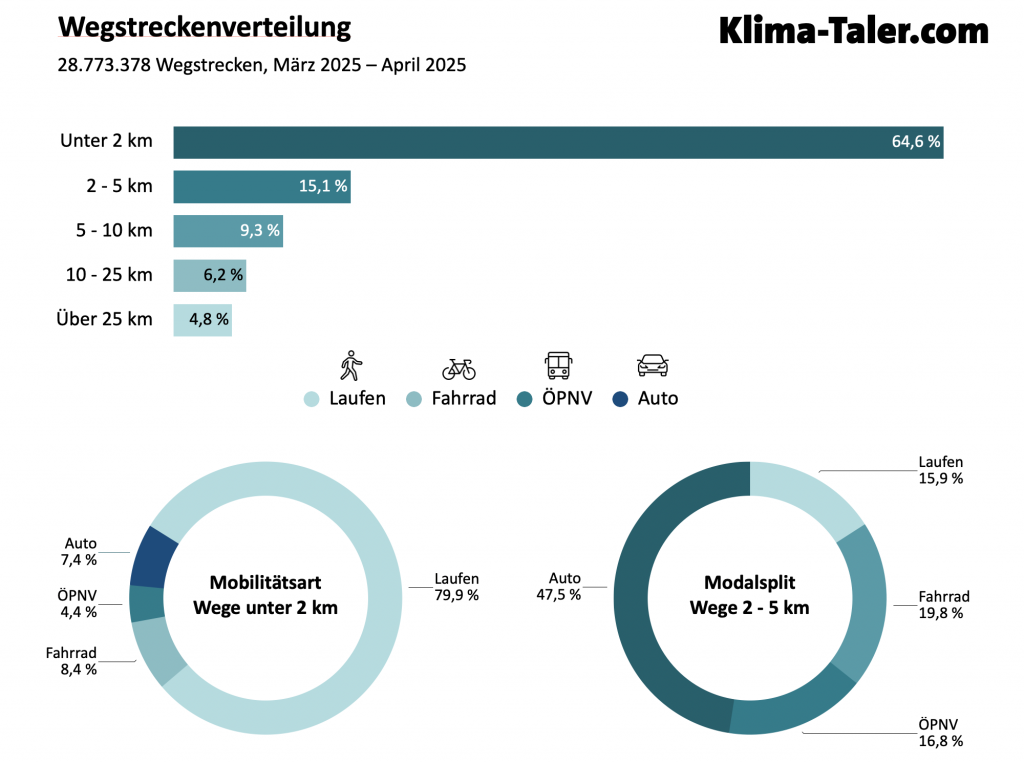The 15-minute city is a concept for livable cities
The 15-minute city concept is a climate-friendly urban planning principle. The idea is simple and offers an attractive alternative to the traditional separation of living and working, which often requires long commutes. The goal is to limit all essential daily trips to a maximum of fifteen minutes. Services, leisure, work, and cultural activities are located close to each other, making everyday life easier with short distances. The 15-minute city naturally allows as much freedom of movement as each individual desires. It is not about restricting people, but about giving them the option to reach everything they need within a quarter of an hour. “15 minutes” is a symbol for “quick” rather than a fixed timeframe—whether 15, 17, or 20 minutes, the key is that everything essential is easily and sustainably accessible.
What you need for a 15-minute city concept
A 15mC concept works best when you consider the following five points:
1. Data & Analysis
Information on routes, infrastructure, services, and the needs of the population forms the basis for all further planning. The Klima-Taler app can provide a reliable overview through privacy-compliant movement data from participants. As the only app, it distinguishes 12 modes of mobility and also tracks pedestrians—the most important information for the 15-minute city. First, it must be clear how many people use which routes and in what way. Only then can it be specifically analyzed which needs are not yet met within the 15-minute radius.

2. Mobility Concept
Safe cycling paths, well-timed public transport, pedestrian-friendly streets, and sharing options ensure that everyone can reach their destinations quickly and sustainably. Based on data analysis, the mobility concept can be aligned with the 15-minute city concept. This can include measures such as increasing public transport frequency or implementing long-term initiatives like a new network of cycling paths.
3. Location Planning for Services
Supermarkets, pharmacies, schools, cultural venues, and green spaces within a short distance make everyday life comfortable and livable. Planning the location of all essential facilities and businesses is at the heart of the 15mC concept. This is often seen as the most challenging aspect, as such planning can seem very long-term. However, in reality, most essential services are already centrally located, so only targeted additions are needed to enhance quality of life and promote climate protection.
4. Participation & Networking
The population, local businesses, as well as associations and municipal institutions are involved. This ensures that the 15-minute city concept is planned and implemented in a way that is practical and sustainable in the long term. Here too, the Klima-Taler app provides a simple digital tool to include everyone and inspire climate-friendly mobility and lifestyles.
5. Monitoring & Adjustment

To ensure that the goals of the 15-minute city concept are achieved, continuous measurement of short trips, CO₂ savings, and, of course, citizen satisfaction is very important. The 15mC concept must be approached flexibly, allowing it to evolve dynamically and adapt to the changing needs of the urban population.
Overcoming the disadvantages of the 15-minute city
Of course, the concept also comes with challenges. One disadvantage of the 15-minute city is that it cannot be implemented equally well everywhere. The concept will therefore not be accessible to all residents. Neighborhoods where everything can be reached within fifteen minutes become more attractive, which can lead to rising rents and dissatisfaction due to unequal access. Existing structures cannot be reshaped overnight. Nevertheless, successful examples like the 15-minute village of St. Paul in Carinthia show that it is possible. The 3,200 residents here can reach everything without a car. The municipality deliberately focuses on a lively town center and avoids shopping malls or business parks on the outskirts.
The study “Die Stadt der Viertelstunde” for all municipalities in Rhineland-Palatinate shows that all independent cities in this state have already achieved the goal. Mainz and Ludwigshafen lead the way, where, on average, a doctor or supermarket can be reached in just seven minutes without a car.
Implementing these changes effectively requires patience, dialogue, and reliable data. Digital tools like the Klima-Taler app can make the process much easier. Collecting data, motivating climate-friendly behavior, and providing simple, transparent communication are features of the app that help the 15-minute city concept reach its full potential.
The essentials of the 15-minute city
In a city of short distances, the car gradually loses its importance. Less traffic means fewer roads and parking spaces, and more space for green areas and communal use. This strengthens neighborhoods, reduces noise and air pollution, and noticeably improves the quality of public spaces.
Everyone benefits from the 15-minute city concept, especially children, young people, and those who cannot always travel by car. A city with fewer cars is quieter, safer, and more livable. It also saves time and money: less congestion, lower fuel and parking costs, and more time for family, friends, and what truly matters.
The Klima-Taler app is an easy-to-use tool to plan the 15mC concept and implement it successfully together with the community. If you want to learn more or have specific questions about what you can achieve with the Klima-Taler app in your city, feel free to contact us!

Markus Schulz
markus@klima-taler.com

